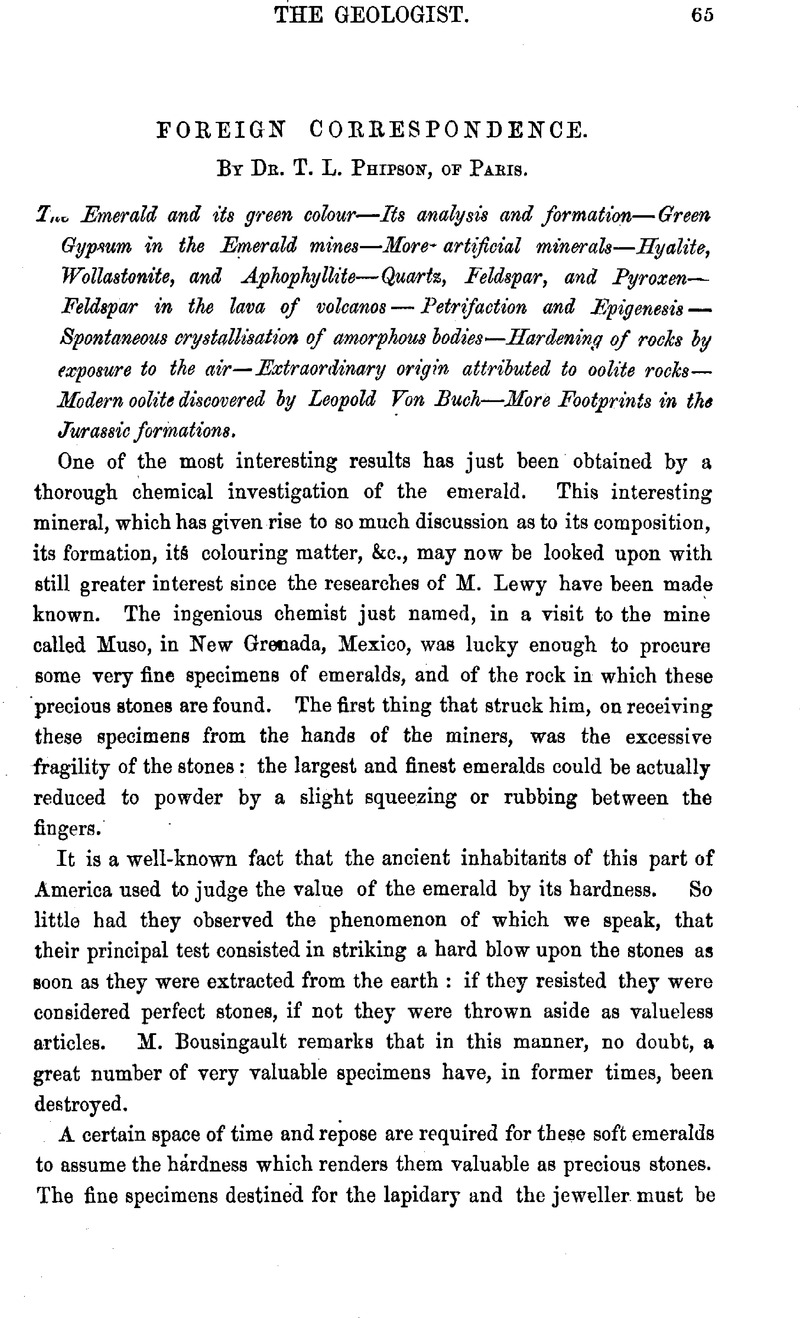No CrossRef data available.
Article contents
Foreign Correspondence
Published online by Cambridge University Press: 17 March 2016
Abstract

- Type
- Letter
- Information
- Copyright
- Copyright © Cambridge University Press 1858
References
page 66 note * Presented to the Academy of Sciences, Nov. 15th, 1857.
page 66 note † It is, perhaps, as well to observe that M. Lewy has not ascertained if this organic substance in the emerald contains oxygen or not. He seems to consider it as a carburet of hydrogen.
page 66 note ‡ See further, the phenomena recently observed-by M. Daubrée.
page 68 note * The natural specimens of sulphide of copper are dimorphous with the sulphide of the laboratory.
page 69 note * They were analysed by Kersten.
page 69 note † Cosmos, Vol. I.
page 69 note ‡ Comptes Rendus, Nov. 9, 1857.
page 70 note * It is a well-known fact that certain sugar-canes, bamboos, &c, will often strike fire with steel, on account of the large quantity of silica contained in the bark of their stems.
page 70 note † The colouring matter of the bark of the trees being accompanied by tannic acid and other substances which have the faculty of preventing, in a great degree, putrefaction or decomposition, is often most beautifully preserved in petrified specimens of woods.
page 71 note * Thus we see sulphate of potash placed in damp chalk, transform itself slowly into gypsum without losing its crystalline form (acoording to Beudant).
page 71 note † The same holds true, to a certain extent, for volcanic lava, both ancient and modern, which furnish very different products, according as their cooling has been rapid or slow. In the first case they often form a black non-crystalline glass; in the latter, a stony mass of crystalline structure.
page 72 note * It was from these large Mexican lakes that Humboldt brought back with him Scheuzher's antidiluvian man (homo diluvii testis), a large salamander belonging to the most recent freshwater formations.
page 73 note * Canarislie inseln.




